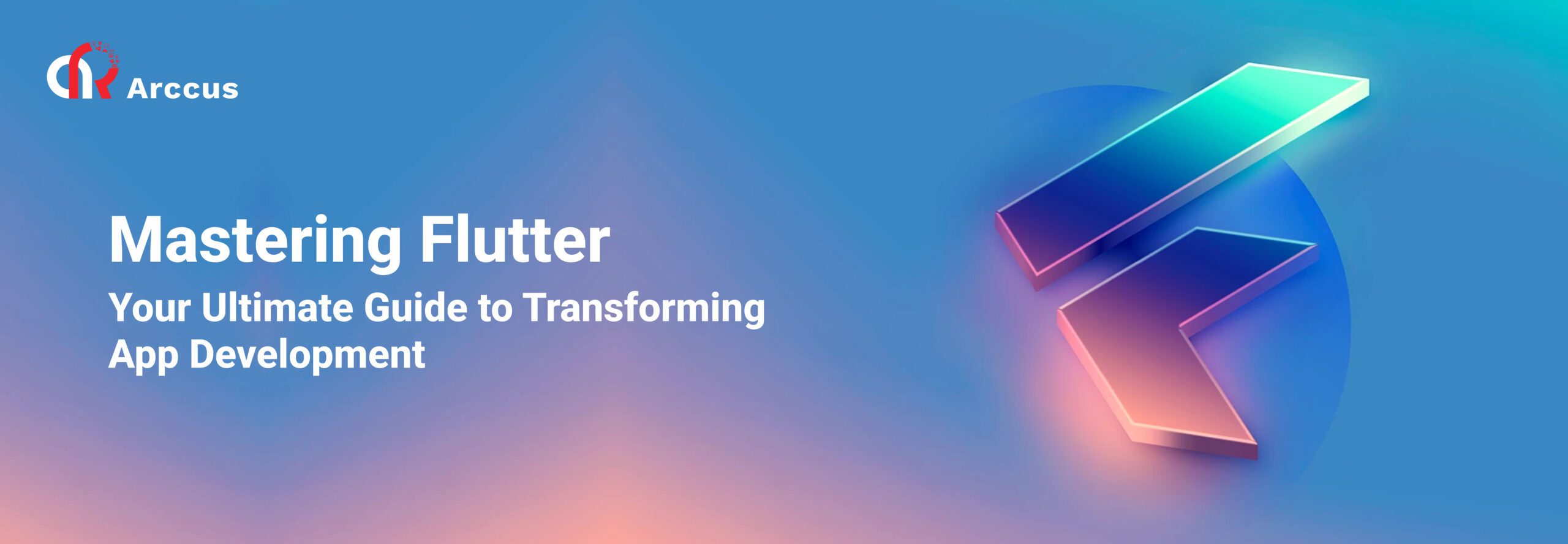Mastering Flutter: Your Ultimate Guide to Transforming App Development

In a world ruled by smartphones and seamless digital experiences, app development is no longer just a skill—it’s a superpower. Flutter stands out among the many frameworks that promise speed, versatility, and beauty. Whether you’re a curious beginner, a seasoned developer exploring new territory, or an entrepreneur building the next billion-dollar app, mastering Flutter app development can transform how you create, launch, and grow mobile applications.
Let’s dive into the world of Flutter development and discover why it’s more than just another tool—it’s a revolution in app development.
What is Flutter?
Flutter is an open-source UI software development kit created by Google. It is used to build natively compiled applications for mobile (Android and iOS), web, and desktop from a single codebase. Flutter uses the Dart programming language and provides a rich set of pre-designed widgets, enabling developers to create beautiful, fast, and responsive user interfaces.
One of Flutter’s key strengths is its “hot reload” feature, which allows developers to instantly view changes in the code without restarting the app. This accelerates the development process and makes it easier to experiment with UI designs and features. With growing community support, comprehensive documentation, and wide platform compatibility, Flutter has become one of the most popular frameworks for cross-platform app development today.
Why Flutter is a Game-Changer
Flutter is not just another framework—it’s a bold reimagining of how apps are built. It redefines developer productivity and creative freedom by removing long-standing pain points in traditional development. Here’s how Flutter development turns conventional app development on its head:
1. Single Codebase, Multiple Platforms
One of Flutter’s most revolutionary features is its ability to build apps for iOS, Android, web, Windows, macOS, and Linux from a single codebase. This capability drastically reduces both development time and cost. Instead of managing separate codebases for each platform, you write once and deploy everywhere—without compromising on quality or performance. For startups and enterprises alike, this approach translates into faster time to market and more efficient use of development resources.
2. Hot Reload for Rapid Iteration
Hot reload is an ideal feature for developers. With it, you can see changes in real time—tweak a layout, fix a bug, or add a feature, and see the result immediately, without a full rebuild or losing your app state. This flutter development enables a fluid, creative, and highly productive environment. The workflow enables fast, safe, and encouraged experimentation. Whether you’re refining UI or debugging logic, hot reload helps you stay focused.
3. Custom, Expressive UIs With Full Control
Flutter gives developers full control over every pixel on the screen. Instead of relying on native UI components, it draws its widgets using a powerful rendering engine. This capability means you can replicate native designs—like Material Design for Android or Cupertino for iOS—or go beyond them with entirely custom and expressive interfaces. Whether you’re building a brand-consistent experience or pushing creative boundaries, Flutter development empowers you to make it happen with precision.
4. Native-Like Performance
Performance is critical, and Flutter delivers. By compiling to native ARM or x86 machine code, Flutter apps run with minimal overhead. Combined with the Skia graphics engine, this enables buttery-smooth animations at 60fps (or even 120fps) on capable hardware. The result? Apps that feel fluid, responsive, and snappy—just like those built natively.
Complete Flutter App Development Guide for Easy Flow
The Journey to Mastery: Learning Flutter Step-by-Step

If you’re just getting started and wondering how to become a Flutter expert, this flutter app development guide is for you.
Let’s walk through each step, one at a time.
Step 1: Learn Dart – Flutter’s Programming Language
Before you start with Flutter app development, you need to learn Dart, the language that Flutter uses.
Why Dart?
Dart is simple, clean, and easy to understand—especially if you’ve ever used JavaScript, Java, or C#. Even if you’re totally new, it’s a wonderful language to start with.
Key Dart topics to focus on:
- Variables – How to store values like numbers and text.
- Functions – Reusable blocks of code that do something.
- Arrow functions – A shorter way to write simple functions.
- Classes and objects – The building blocks of Dart code.
- Inheritance – How to make new classes based on existing ones.
- Async/await – How to handle things that take time, like loading data from the internet.
Step 2: Set Up Flutter on Your Computer
Setting up Flutter is easy if you follow the right steps.
Here’s how to do it:
- Go to flutter.dev and download the Flutter SDK (software development kit).
- Install a code editor like Visual Studio Code or Android Studio.
- Open a terminal or command prompt and run this command: flutter doctor
This checks if everything is installed properly and tells you what’s missing.
Create your first app:
Once the setup is complete, run the following command: flutter create my_first_app
This creates a basic Flutter app you can run and explore.
Step 3: Understand the Widget Tree – The Heart of Flutter
In Flutter, everything is a widget. Buttons, text, rows, columns, and even the whole screen are all widgets.
There are two main types of widgets:
- StatelessWidget: Things that never change, like a static label or an icon.
- StatefulWidget: Things that can change, like a form, a counter, or a checkbox.
Widgets are organised in a tree-like structure—this is called the Widget Tree. Understanding how widgets fit inside each other is a big part of learning Flutter.
Best Flutter App Development Company Contact Us
Step 4: Learn to Manage App State
“State” means the data that your app needs to remember.
For example:
- A counter number that increases when you tap a button
- A form with text input that the user types in
Flutter has different ways to manage state, such as:
- Using setState() is best suited for small applications or when making simple changes.
- Provider – A popular tool to share data across different parts of the app.
- Riverpod, Bloc, GetX – Advanced state management tools for bigger apps.
Step 5: Move Between Screens – Navigation and Routing
Most apps have more than one screen. You’ll need to navigate between them.
Common navigation methods:
- Navigator.push() – Go to a new screen.
- Navigator.pop() – Go back to the previous screen.
- Named routes – Define all your screens in one place for easier management.
For bigger apps, consider using go_router and auto_route. These help you organise your routes more cleanly.
Step 6: Connect to the Internet and Use Data
Most apps need to get data from somewhere—like news, weather, or user info.
How to do this:
- Use the http or dio package to send and receive data.
- Use JSON to work with the data (most APIs send data in JSON format).
- For saving data locally, try SQLite, Hive, or Firebase.
Step 7: Make Your App Look Great
Flutter development is famous for beautiful design. Don’t just focus on code—make your app look and feel great too!
Things to try:
- Themes – Customise colors and fonts to match your brand.
- Animations – Add smooth transitions and effects.
- Responsive layouts – Make your app look good on all screen sizes using MediaQuery and LayoutBuilder.
Step 8: Testing and Debugging Your App
Before launching, test your Flutter app to make sure it works well.
Types of testing:
- Unit tests – Test individual functions.
- Widget tests – Test UI parts.
- Integration tests – Test the whole app working together.
Use Flutter DevTools to find bugs and improve performance.
Flutter Mobile App Development for Better Performance
Step 9: Build and Release Your App
You’re almost there! Your Flutter mobile app development is about to finish.
For Android:
- Run flutter build apk
- Follow Google Play Store instructions to upload
For iOS:
- You’ll need a Mac and Xcode
- Use flutter build ios
- Follow Apple’s App Store process
Step 10: Keep Practicing and Stay Updated
Flutter is growing fast. Keep learning and building projects!
Stay up to date:
- Follow Flutter’s official blog
- Watch Flutter videos on YouTube
- Join communities like:
- Reddit: r/FlutterDev
- Discord: Flutter Community servers
- Twitter: Follow @flutterdev
Your Flutter Journey Begins Now
Mastering Flutter isn’t just about building apps. It’s about transforming how you think, design, and solve problems. It’s about unlocking a new level of creativity and efficiency.
Whether you’re building your first to-do app or architecting a cross-platform SaaS solution, Flutter offers the tools, flexibility, and performance to bring your ideas to life. So download the SDK, write your first widget, and embrace the magic.
With Flutter, you don’t just build apps; you create immersive experiences.